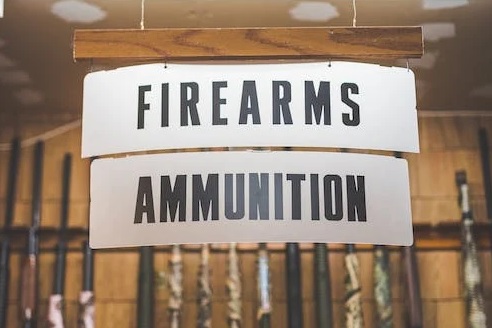Why 5.56 Is the Eternal Premier AR Caliber
For those looking at making a home-built rifle, the modern era furnishes a lot of opportunities past the staples, 5.56 and 7.62 NATO. Today you can build an AR-style rifle with a .350 Legend upper, or even one for 7.62 Soviet, .300 BLK, or 6.5 Creedmoor. There are even rimfire AR rifles out there.
But, with all of this said, there is a reason that 5.56 and .223 are still so common, and why they have maintained, even enjoyed a spot of nearly uncontested popularity for more than 60 years.
It’s because it’s a great cartridge that doesn’t get enough love and attention (even though it does get a lot) - 5.56. We said what we said.
But here are the best reasons why building with a 5.56 complete AR upper receiver might make a good idea.
Cost

To be honest, the cost of 5.56 and .223 ammo can vary pretty wildly based on what the cartridge is loaded with, but in general, you’re looking at between 60 cents and $2.50 per pull of the trigger.
But, in some cases, if you buy bulk ammo or shop surplus deals, you can engineer the cost down to less than 50 cents per shot. If you load your own ammo and buy components in bulk, you might be able to get it even lower.
As one of the most popular centerfire cartridges ever developed, it enjoys a large supply and that helps keep costs low, as do the small cartridge casings, bullets, and powder charge.
All in all, it is probably the cheapest (on average) rifle caliber out there, and by a fair margin. If you take a step up, say, to 7.62 NATO, expect to pay much closer to a dollar per round, and it only goes up from there.
The only way you could realistically engineer a cheaper AR is by building with a complete AR upper for a .22 LR and then you’re going to make tradeoffs in other areas.
Weight (and Size)
Both the weight and size of the diminutive (but capable) 5.56 are advantages in this arena. As a short-action cartridge, it is very small - just over 2” in length, keeping mags fairly compact, and it’s very light, too.
This makes it far easier to carry a whole bunch of loaded mags (or even loose rounds) for longer.
This is nice not only when lugging ammo cans to and from your bench at the range, but when you’re in competition or in the field hunting and are limited by how much weight and volume you can realistically carry.
We get it, ammo is heavy - but at least this one isn’t as bad as it could be.
Recoil
Or rather, perhaps, we should say, lack thereof. There is one thing that 5.56 has pretty much all centerfire calibers beat on, hands down, and it’s recoil.
This little cartridge produces basically none. Even hot 5.56 loads produce a free recoil of about 5 pounds, maybe even a little less.
And guess what? If you determine, for some reason, that 5.56 kicks too hard for you, there are many, many things you can do about it.
Handload to lower load specifications. Add a heavier buffer tube weight. Adjust the gas system. Or, perhaps easiest of all, take off whatever muzzle device came with the rifle and tack on a muzzle brake.
If you do all of those, you’re not going to feel recoil at all.
Availability

Because this was originally a military caliber (and it is still used widely in that capacity) there are a lot of manufacturers that load it, and not just that, but they load a lot of it.
As a result, 5.56 is usually about as ubiquitous in gun shops as 9mm FMJ and 12 gauge 8 shot target loads. If you shoot a 5.56 or .223, you will likely never be far from a source.
Availability of Parts
Suppose you want to make adjustments to your rifle - well, pretty much every manufacturer in the AR game makes parts for 5.56 rifles. You’re covered on that front too.
Utility and Versatility
This is actually, far and away, the strongest argument in favor of 5.56 and .223 as cartridges, so we’re going to lead with it.
There is just so much you can do with these cartridges.
Since it is cheap and low-recoil, it’s great for teaching basic gun safety and for training. The same arguments make it excellent as a high-volume shooting round. If you burn a lot of brass, this is a good option.
It is accurate and even has a fairly flat trajectory, making it good not only for competition, but for long-range competition.
For sporting and defensive applications, it is excellent. There are other, better rounds in terms of stopping power, like .300 BLK (at close ranges) but overall, it is highly viable.

And for hunting, there really isn’t a lot it can’t do, especially with proper shot placement. Small game and medium game are easy prey for the 5.56 and .223, but so are medium large and even some large game. These cartridges can dispatch deer and game much larger than deer if you aim right.
Let’s put it this way: where you shoot is more important than what you shoot. The makes 5.56 and .223 both excellent and highly versatile cartridges.
Looking for a Complete AR Upper for Your Build?
With all of this said and done, 5.56 is a great caliber for an AR build, and the cartridge has a lot of applications.
At the same time, if you’re here for something else, we carry it. The 6.5 Creedmoor is better at long ranges, after all, and the .300 BLK is better at short ranges.
And so on and so forth. Whatever caliber you ultimately settle on, get your complete AR upper here at MCS Gearup. Contact us if you have any questions about caliber, parts, and compatibility before buying - we sell everything you need if you don’t go with a complete upper receiver, including but not limited to AR-15 charging handles, bolt carrier groups, barrels, and more.

